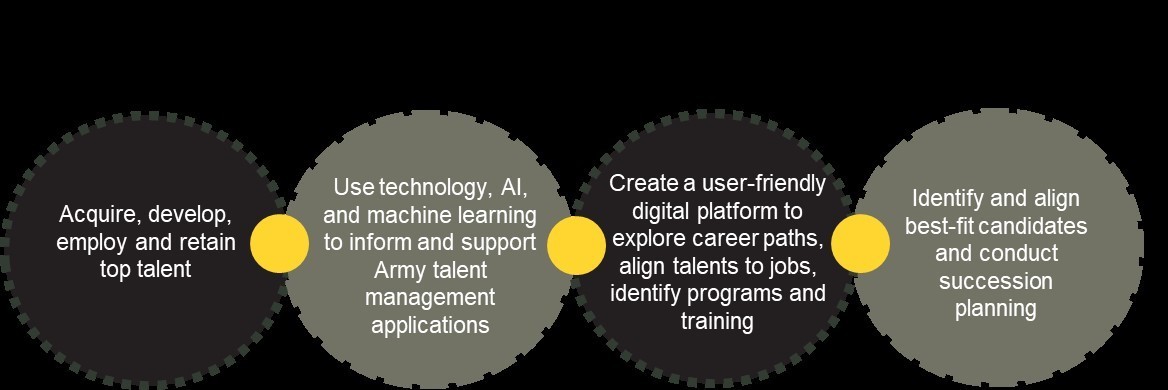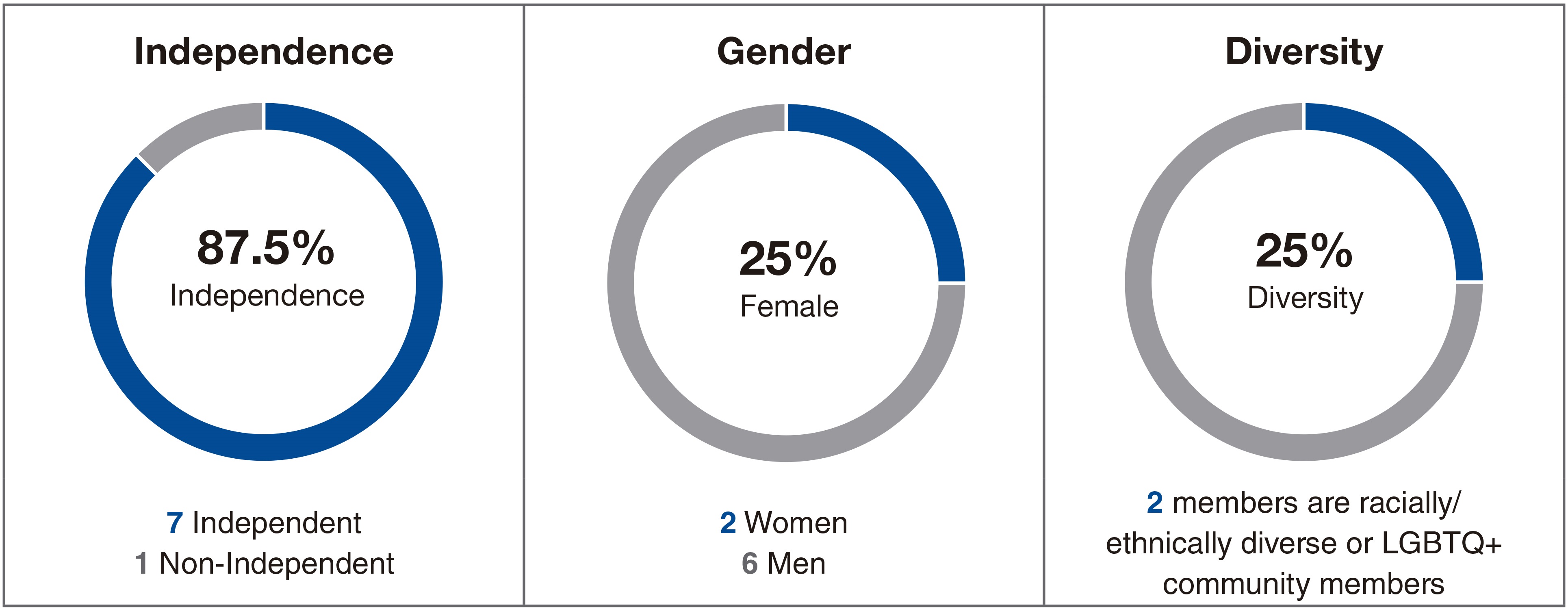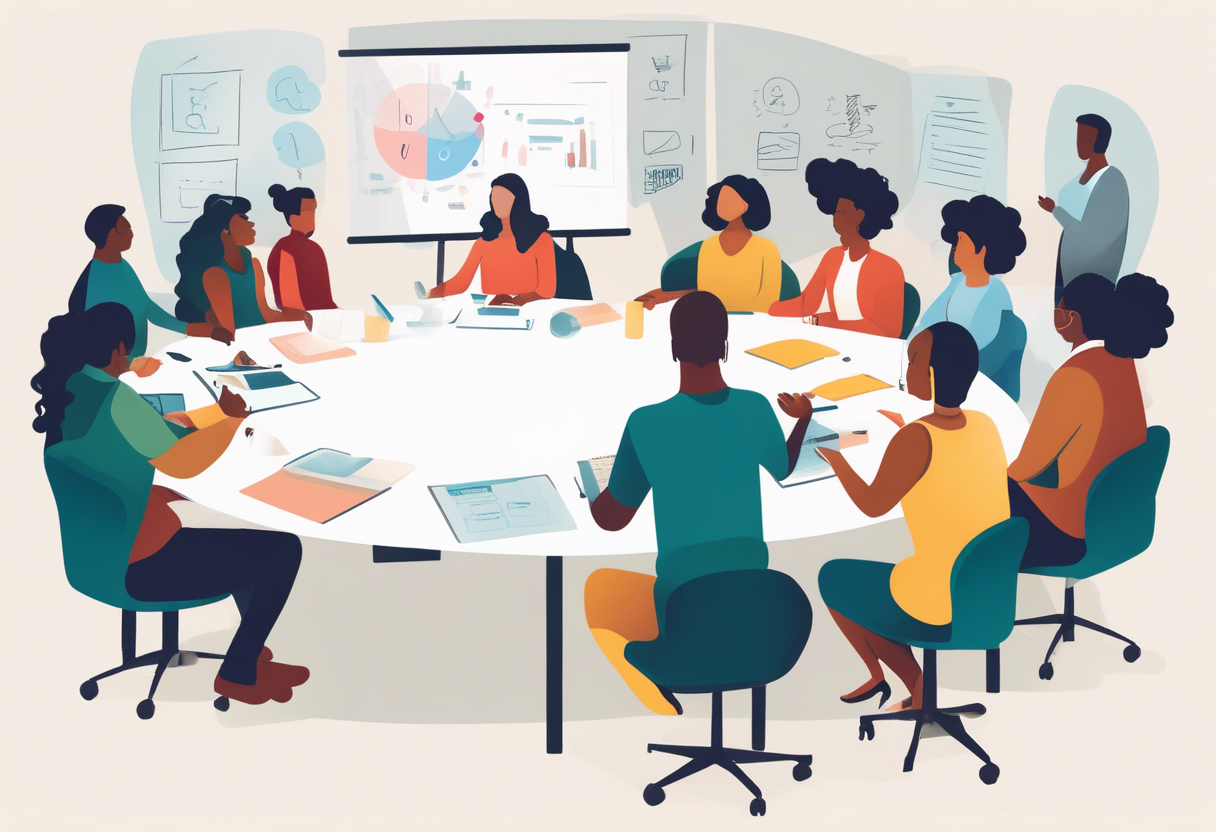
In the workplace today, diversity in talent development isn't just a nice-to-have—it's essential. Companies with diverse teams are 35% more likely to do better than their competitors. It's not just about meeting quotas; diversity sparks creativity, fuels innovation, and boosts performance. So, how do you tap into this potential? In this article, we'll explore the details of diversity in talent development. We'll look at practical steps, real success stories, and ways to tackle common challenges. Whether you're an experienced HR pro or a curious team leader, stick around to see how diversity can drive your team's growth and success. Let's begin!
Understanding Diversity in Talent Development
Defining Workplace Diversity for Talent Development
Diversity at work is about embracing differences. This encompasses various dimensions such as:
- Race
- Ethnicity
- Gender
- Age
- Sexual orientation
- Religion
- Disability
- Socio-economic status
It also involves valuing diverse thoughts, skills, and experiences. To make diversity work, an inclusive culture that welcomes everyone is essential. Learn more about diversity management.
Effective diversity management creates a fair workplace where everyone feels important and empowered. True diverse leadership isn't just about numbers; it's about implementing practices that encourage teamwork and cultural understanding. Explore diverse leadership.

How Diversity Enhances Talent Development
Diversity in talent involves bringing in people from different backgrounds. This mix enhances creativity and problem-solving through fresh perspectives. Discover the impact of talent diversity.
When leadership teams are diverse, they make better decisions and spark innovation by considering various viewpoints. Read more about diverse leadership.
Hiring based on skills ensures fairness and taps into different perspectives. Understand diversity hiring. Good diversity management involves integrating diversity into hiring and training processes to offer fair opportunities for everyone. Find out more about diversity management.

Step-by-Step: Implementing Diversity-Focused Talent Development
Assess Diversity and Inclusion in Your Organization
Conduct Surveys, Focus Groups, and Employee Interviews
To truly understand your organization's stance on diversity and inclusion, you need to dig deep. Start with anonymous surveys that allow employees to share their thoughts and experiences regarding diversity, equity, and inclusion. These should cover various aspects like workplace culture and perceived fairness in opportunities.
But don't stop there. Organize focus groups to delve into specific issues highlighted in the surveys. Ensure these groups are diverse to capture a range of perspectives, and have skilled moderators guide these discussions to ensure everyone has a voice.
For even more insight, conduct one-on-one interviews. These can uncover personal stories and thoughts that might not emerge in group settings. Ensure interviews are conducted by trained personnel who can create a safe space for honest sharing.
Analyze Experiences and Perceptions of Diversity and Inclusion
Once you've collected this information, analyze it closely. Identify common themes and note any differences in how various groups perceive diversity and inclusion within your organization.

This analysis will provide a clear picture of the current status and highlight immediate areas for improvement. It also establishes a baseline to track future progress. Use these insights to shape your diversity-focused talent development strategy, ensuring it truly addresses your workforce's needs.
Set Diversity-Focused Talent Development Goals
Align Objectives with Organizational Values and Mission
With a clear understanding of your current status, it's time to set goals. Align these goals with your organization's values and mission. For instance, if your company values innovation, a goal could be to increase diversity in teams to foster more creative ideas.
Keep your goals SMART: Specific, Measurable, Achievable, Relevant, and Time-bound. This approach helps maintain focus and allows for success measurement. For example, aim to increase the number of women in leadership roles by 20% within three years.
Enhance Representation and Equity in Career Advancement
Don't just concentrate on numbers; think about equity in career growth as well. Create pathways that help diverse talent advance within the organization. Goals could include fair recruitment processes, equal access to professional development, and removing barriers that hinder underrepresented groups.

Track your progress with metrics like promotion rates and employee satisfaction across different groups. Regularly review these metrics to assess the effectiveness of your efforts and make adjustments as needed.
Build Diverse Talent Pipelines
Collaborate with External Organizations and Educational Institutions
Building a diverse talent pipeline requires reaching out and forming partnerships. Collaborate with organizations focused on diversity and inclusion, such as professional associations and community groups. They can provide access to a broader talent pool and offer insights into inclusive hiring practices.
Colleges and universities are excellent partners as well, particularly those with diverse student populations. Participate in career fairs, offer internships, and establish scholarships to attract diverse talent early on. These efforts not only build a pipeline but also demonstrate your commitment to diversity.
Target Recruitment Strategies for Underrepresented Communities
To effectively reach underrepresented communities, tailor your recruitment strategies to their needs. Use inclusive language in job ads and emphasize your commitment to diversity. Post jobs in locations where diverse groups are likely to see them.
Consider referral programs that encourage employees to refer candidates from underrepresented backgrounds. Additionally, train hiring managers to recognize and overcome biases in recruitment.
Implement Mentorship and Sponsorship Programs
Connect Diverse Employees with Mentors and Sponsors
Mentorship and sponsorship programs are essential for supporting the growth of diverse employees. Set up structured programs where employees are paired with mentors and sponsors who can guide and support them. Mentors provide advice and share experiences, while sponsors actively advocate for their protégés' advancement.
Ensure these programs are accessible to everyone. Train mentors and sponsors to effectively support diverse talent. Regularly evaluate these programs, gather feedback, and make adjustments to ensure their effectiveness.
Offer Career Guidance and Advocacy for Advancement
In addition to mentorship and sponsorship, offer resources and opportunities for career growth. This could include workshops, training sessions, and access to professional development tools. Encourage employees to set career goals and support them in achieving those goals.
Cultivate a culture where leaders actively support diverse talent. This may involve nominating employees for leadership programs, recommending them for key projects, or advocating for their promotions.
Foster Inclusive Communication Channels
Promote Open Dialogue and Active Listening
Foster an environment where open dialogue and active listening are the norms. Establish communication channels where employees can share their experiences without fear. Regular town hall meetings, open forums, and feedback sessions work well for this.
Encourage leaders to practice active listening by demonstrating empathy and understanding. This builds trust and reinforces that diverse voices matter.
Create Safe Spaces for Sharing Experiences
In addition to open communication, create safe spaces where employees can share their experiences in a supportive setting. Employee resource groups (ERGs) are excellent for this. They provide a platform for employees with shared identities to connect, support each other, and advocate for change.
Support these groups by providing resources like meeting spaces and funding. Encourage executive sponsorship to ensure their voices are heard at the highest levels.
Establish Accountability for Diversity Initiatives
Implement Systems to Track Diversity and Inclusion Progress
Accountability is crucial for the success of diversity efforts. Establish systems to track progress toward your goals. This could involve regular reports on key metrics like representation and retention rates for diverse employees.
Utilize data tools to identify trends and areas needing attention. Review this data with leadership to ensure transparency and accountability.
Make Leaders Accountable for Diversity Outcomes
Make leaders accountable for the outcomes of diversity efforts. Include diversity metrics in performance evaluations and leadership programs. Leaders should drive progress in their areas and be recognized for their efforts.
Foster a culture of accountability by setting clear expectations and providing leaders with the support they need to succeed.
Design Interactive Diversity Training Programs
Use Workshops and Role-Playing for Engaging Training
Diversity training should be more than just lectures. Create interactive materials that engage employees. Workshops and role-playing are excellent for this. They allow employees to practice new skills and see things from different perspectives.
Use real-life scenarios in training to make it relatable. Allow employees time to reflect on what they learn and discuss how to apply it in the workplace.
Address Bias and Enhance Cultural Competency
Training should address unconscious bias and enhance cultural competency. Provide employees with tools to recognize and challenge their biases. Activities that encourage self-reflection and awareness of different cultures can help.
Offer ongoing training to continually improve cultural competency. This could include guest speakers, panel discussions, and online resources.
Implement Fair Performance Evaluations
Revise and Enhance Performance Management Processes
To ensure fairness in evaluations, review and adjust your performance management processes. This might involve revising criteria to be more objective and inclusive. Consider 360-degree feedback systems for a comprehensive view of performance.
Train managers to identify and reduce biases in evaluations. Encourage them to focus on measurable outcomes and provide constructive feedback.
Promote Fairness and Equity in Evaluations
Ensure evaluations are fair for everyone. Regularly review outcomes to identify any disparities in ratings or advancement opportunities across groups.
Address any issues by providing support and development opportunities. This might involve targeted training, mentoring, or access to resources to help close performance gaps.
Evaluate and Improve Diversity Initiatives
Gather Data on Diversity and Equity Metrics
To assess the effectiveness of your diversity initiatives, collect data on key metrics like representation and equity. Break this data down by demographic groups to identify trends and disparities.

Use this data to evaluate the impact of your efforts and identify areas for improvement. Regularly review these metrics with leadership to ensure progress toward your goals.
Refine Programs and Policies Using Data Insights
Use the data to assess the performance of your programs and policies. Determine what's working and where improvements are needed. Use this information to refine existing programs and create new ones to address any gaps.
Involve employees in the evaluation process by soliciting their feedback. This can provide valuable insights and help ensure programs meet their needs.
Identifying and Assessing Current Diversity Status
Understanding your organization's current diversity status is essential for creating effective talent development strategies. Use insights from surveys, focus groups, and interviews to assess where you stand and identify areas for improvement. This assessment will serve as the foundation for setting clear goals and launching targeted initiatives.
Designing Inclusive Talent Development Programs
Develop talent development programs that are accessible to everyone. Ensure these programs address the unique challenges faced by diverse talent. Offer a variety of opportunities, such as leadership training and skill-building workshops, to support employees at different career stages.
Leveraging Diverse Perspectives for Skill Enhancement
Encourage employees to leverage diverse perspectives to enhance their skills and drive innovation. Create opportunities for cross-functional collaboration where employees can learn from each other's experiences. This not only enhances skills but also fosters a culture of inclusivity and creativity.
Monitoring and Evaluating Diversity Initiatives
Continuously monitor your diversity initiatives to ensure they are effective. Use data-driven insights to assess progress and make informed decisions about future steps. Regularly seek feedback to keep programs relevant and impactful.
By following these steps, organizations can effectively implement diversity-focused talent development strategies that drive meaningful change and create a more inclusive workplace.
For more insights on implementing diversity-focused talent development, check out the Canadian Centre for Diversity and Inclusion (CCDI) toolkit.
Case Studies: Success Stories of Diversity in Talent Development
Diversity-Driven Innovation: Company A's Success Story
SAP's Autism at Work program has significantly enhanced their software development and analytical capabilities by hiring individuals on the autism spectrum. This strategic move has not only streamlined operations but also reduced costs.

Additionally, SAP has set an ambitious goal to have 30% women in leadership roles by 2022, promoting gender equality and fostering greater innovation. With over 80 employee resource groups, SAP is dedicated to building an inclusive culture, which contributes to revenue growth and broadening their market reach.
Diverse Perspectives for Informed Decisions: Company B's Approach
Cisco's Proximity Initiative encourages leaders to engage with colleagues from diverse backgrounds, enhancing empathy and creating a more inclusive workplace.
Similarly, Rolls-Royce's 'Being Like Me' initiative focuses on openness and psychological safety, aiding in achieving gender balance on its board. Diverse teams bring varied perspectives, leading to improved analysis and more informed decision-making.
Boosting Engagement Through Diversity: Company C's Tactics
Google's unconscious bias training and affinity groups have increased employee satisfaction, particularly among underrepresented groups. Regular employee surveys are conducted to gauge sentiments, ensuring everyone feels engaged and included. Embracing diversity not only enhances public perception but also keeps employees committed and reduces turnover.
Overcoming Challenges in Diversity-Focused Talent Development
Tackling Unconscious Bias in Talent Development
Unconscious biases are hidden stereotypes that influence our decisions without us even realizing it. They can significantly impact hiring and promotions. Here are some strategies to address this issue:
- Blind recruitment processes: By removing personal details from resumes, we can reduce biases. Learn more about blind recruitment processes.
- Structured interviews: Implementing interviews with set questions and diverse panels helps keep individual biases in check.
- Regular unconscious bias training: This training is crucial for helping employees recognize and manage their biases. For further reading, check out this resource.

Overcoming Cultural Misunderstandings in Diverse Teams
Cultural misunderstandings arise from differing values and communication styles among employees. To bridge these gaps:
- Cultural competency training: This training enhances awareness of cultural differences. More information can be found here.
- Open communication: Encouraging open discussions and fostering respect can help bridge language and cultural gaps.
- Employee Resource Groups (ERGs): Supporting ERGs provides a platform for diverse voices. Learn more about ERGs here.

Promoting Continuous Improvement in Diversity Initiatives
For diversity initiatives to be successful, they require clear goals and robust leadership support. Consider the following actions:
- Crafting clear policies: Developing policies that remove barriers can enhance engagement and trust.
- Regular diversity training: This is vital for addressing biases and improving teamwork. Explore more on diversity training here.
- Expanding talent pipelines: Targeted outreach can attract diverse candidates.
- Regular check-ins: These ensure that diversity strategies remain on track and relevant.

FAQ Section
How Can Diversity in Talent Development Drive Innovation?
Diversity training is key to fostering an environment where differences are understood and respected. This creates a more inclusive and equitable workplace. Such an environment is a catalyst for innovation and enhances teamwork by uniting individuals from various backgrounds and perspectives.
By prioritizing diversity and inclusion, companies can enhance team performance and generate more innovative ideas. Organizations with robust diversity training programs often experience increased creativity and problem-solving capabilities due to these varied perspectives and collaborative efforts.
Learn more about diversity training.
Key Strategies for Attracting and Retaining Diverse Talent
To attract a diverse workforce, implementing diversity management policies within hiring, management, and training is crucial. These policies contribute to building an inclusive workplace.
Diversity training that addresses unconscious biases and cultural competence fosters a welcoming environment, aiding in the retention of diverse employees. Aligning personal growth opportunities with company goals further enhances morale and retention. Additionally, training that promotes allyship and equity strengthens workplace culture.

Explore strategies for retaining diverse talent.
Impact of a Diverse Workforce on Decision-Making
Diverse teams introduce a variety of perspectives, reducing groupthink and enhancing creativity, which leads to improved decision-making. Diversity management ensures that everyone's voice is heard, boosting collaboration and resulting in more informed decisions.
Diversity training raises awareness of biases, contributing to fairer decision-making processes. Moreover, a diverse leadership team that regularly engages in diversity and inclusion training is more likely to make innovative and effective strategic decisions.
